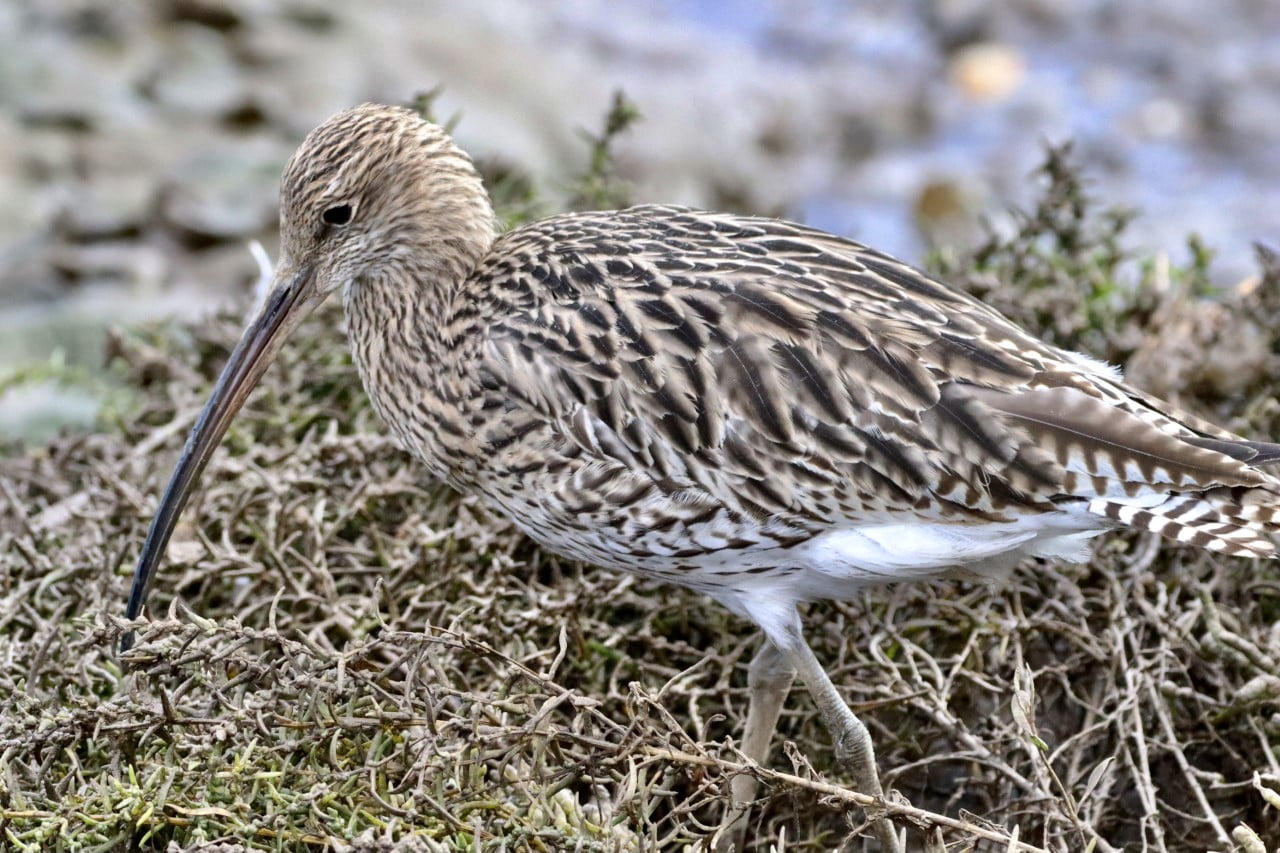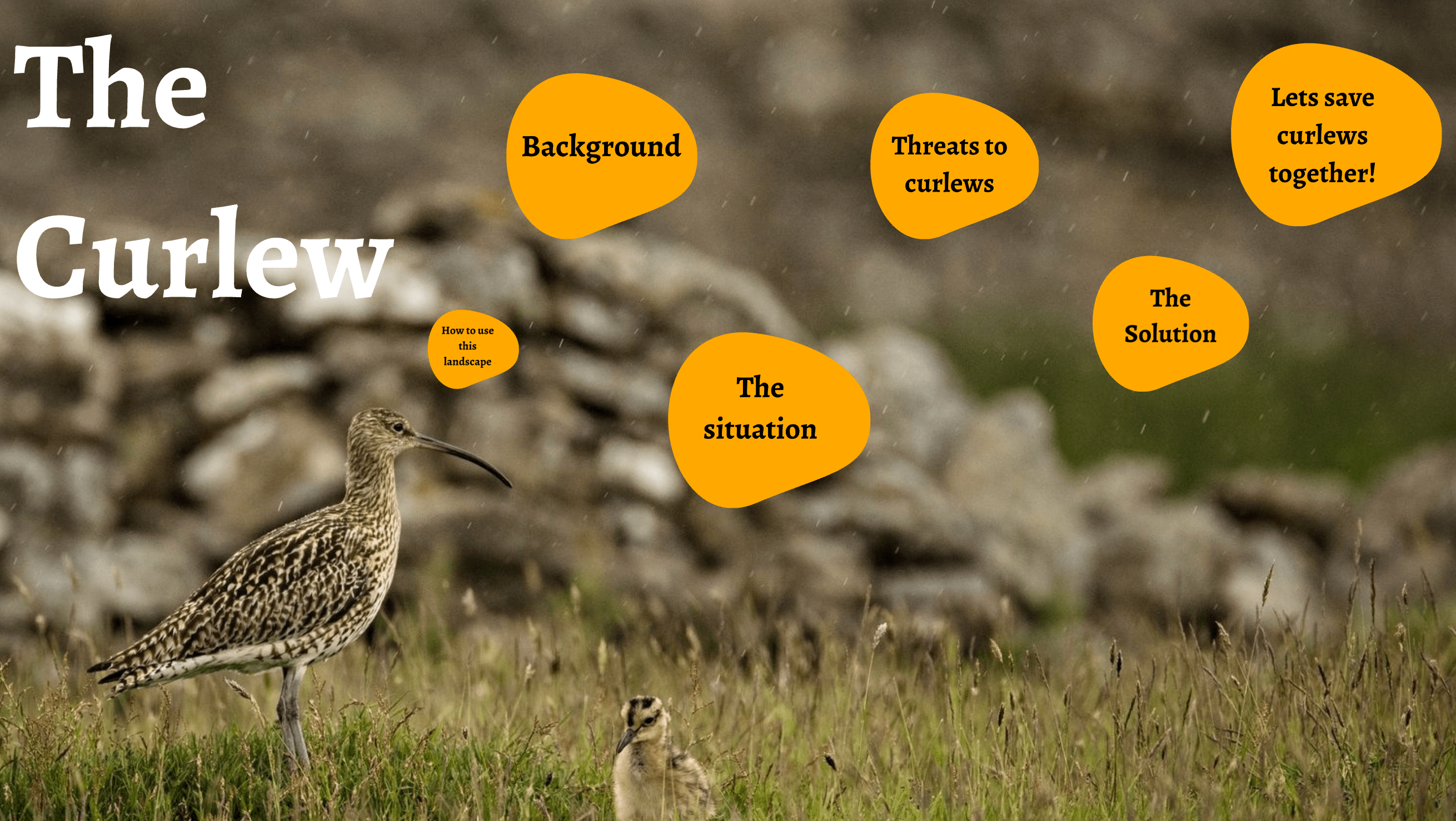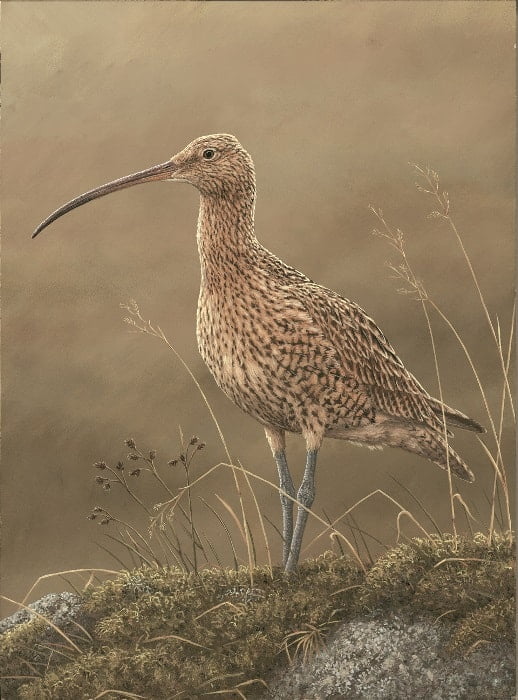Photo by Andy Gregory
Sound of the curlew
'Curlee' call
The Curlew
The Eurasian Curlew, Numenius arquata, was once a common sight across Ireland and the UK and their distinctive calls could be heard along coasts and across farmland, in the lowlands and uplands.
Today, widespread changes to our countryside have seen their numbers dramatically decline, especially over the last 40 years. In Southern Ireland curlews have decreased by over 90%, in Wales by over 80% and on average we have lost 60% throughout England and Scotland since the 1980s.
All this is happening as society is becoming ever more detached from the natural world, we are less connected to nature than at any other time in history. This has to change.
Photo credit: Emma Nunn
Curlews in culture
The curlew is an iconic and beautiful bird, celebrated in art, sculpture, photography, poetry and literature throughout the ages, the oldest known poem to mention curlews, 'The Seafarer' dates back to 1000AD!
Artwork by Robert E Fuller (left) Steph Smith (middle) Wendy-Bramall (right).
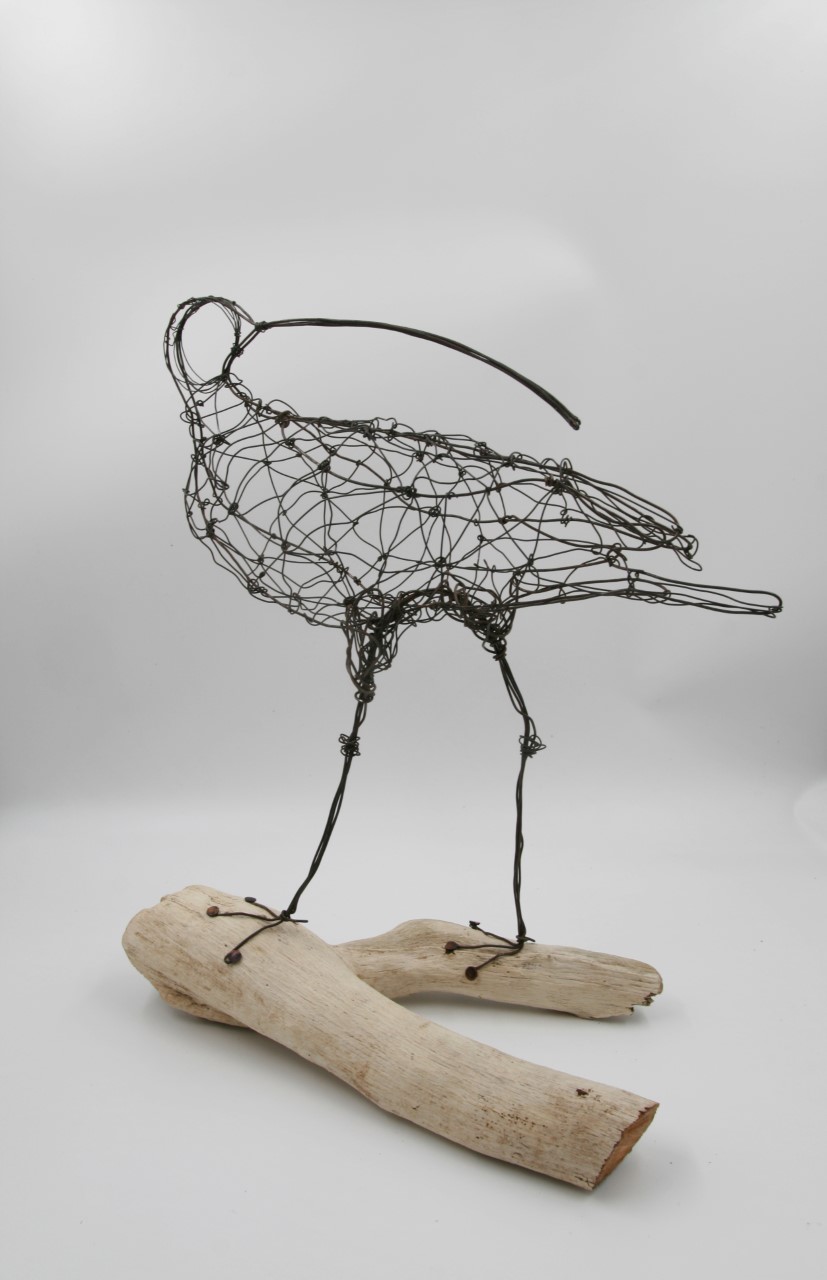
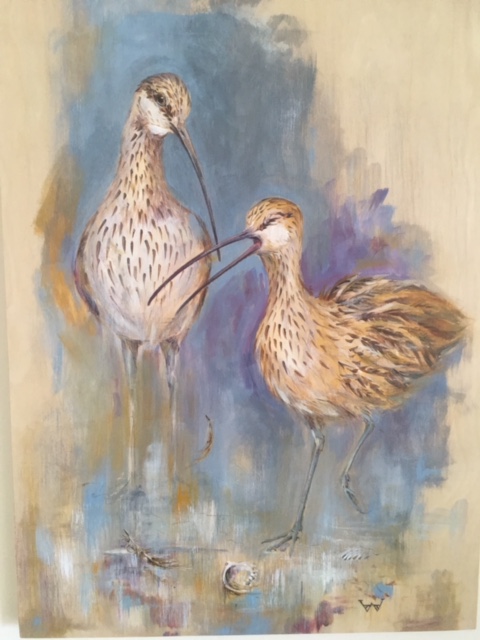
Extinction
Have you heard the cry of the curlew?
I tell you –
I would rather we lost
the entire contents
of every art gallery
in the whole world
than lose
forever
the cry of the curlew
Alastair MacIntosh
To read more poems inspired by curlews click below.
The Legend of St Beuno
Legend tells us that on a journey from the Lleyn Peninsula to Anglesey, the small boat carrying the seventh-century Welsh missionary St Benuo, was suddenly rocked by a gust of wind and his book of sermons was dropped into the sea. St Beuno was distraught as he watched years of work and prayerful insight sink beneath the waves. It was at this point that a miracle happened. A brown bird with a long, downward curving bill wheeled out from the shore and swooped down to the water, picked up the book and returned it to the shore to dry on the rocks. Overcome with gratitude, St Beuno blessed the curlew and decreed that from that moment on, curlew nests would always be difficult to find and should be protected for ever, and indeed curlew nests are notoriously difficult to spot!
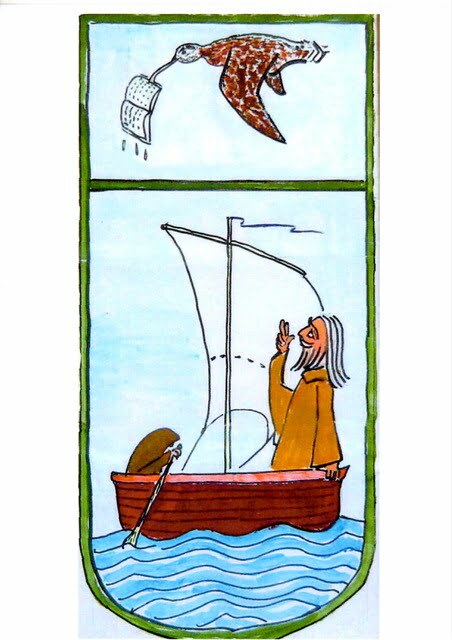
The Seven Whistlers
Cries that forebode disaster; in both English and Welsh mythology the Seven Whistlers were seven birds that would fly together by night and warn of impending disaster and death. Belief in the Whistlers was particularly common among seamen and miners during the 19th century and many workmen would refuse to work if the whistlers were heard the night before. Some believed that these eerie calls were the spirits of the dead, but in fact they were the calls of curlews.
Coal mining. Illustration from The Graphic 1871.
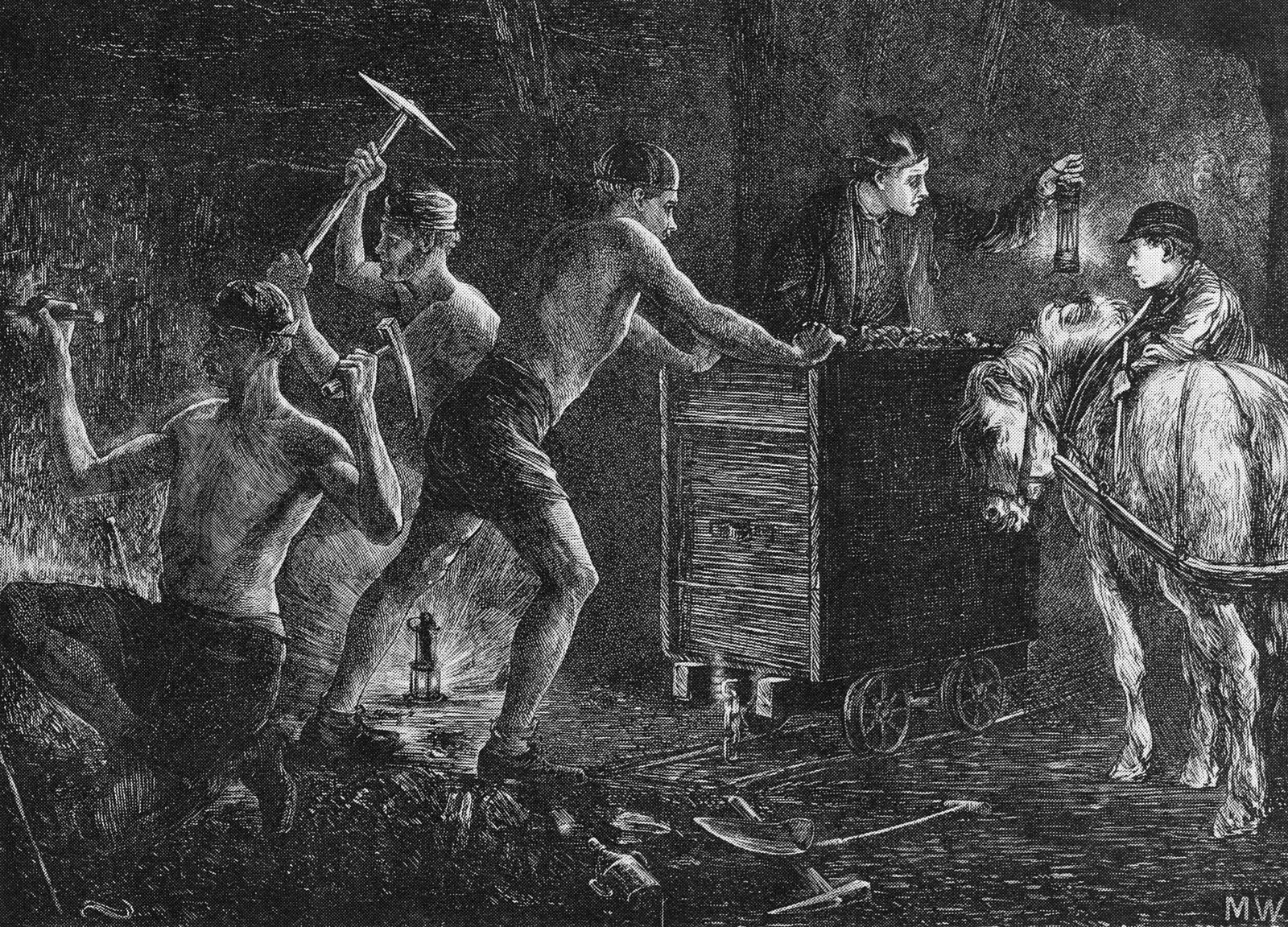
More Than Memory
This beautiful and gentle song was written especially for World Curlew Day 2020 by singer/songwriter Gareth Davis Jones. A love song to a wonderful bird
The Seven Whistlers
A video of the song "The Seven Whistlers" by Sarah Deere-Jones, written to highlight the loss of Curlew and other birdsong
St Beuno & The Curlew
The legend of St Beuno and The Curlew - a song by Barron Brady.
Films, podcasts & publications
"Keeper of the Call", a beautifully touching story about one man's desire to keep the call of the Curlew alive.
A short film with music and narration by David Gray.
Curlew Action celebrates and raises awareness of curlews worldwide. Please enjoy these short podcasts, which are produced and presented by Mary Colwell. They aim to bring different perspectives from leading conservationists, artists, writers and scientists about the Curlews of the world. Curlew Action contributes to a number of publications, our publications page displays some interesting and important examples.


